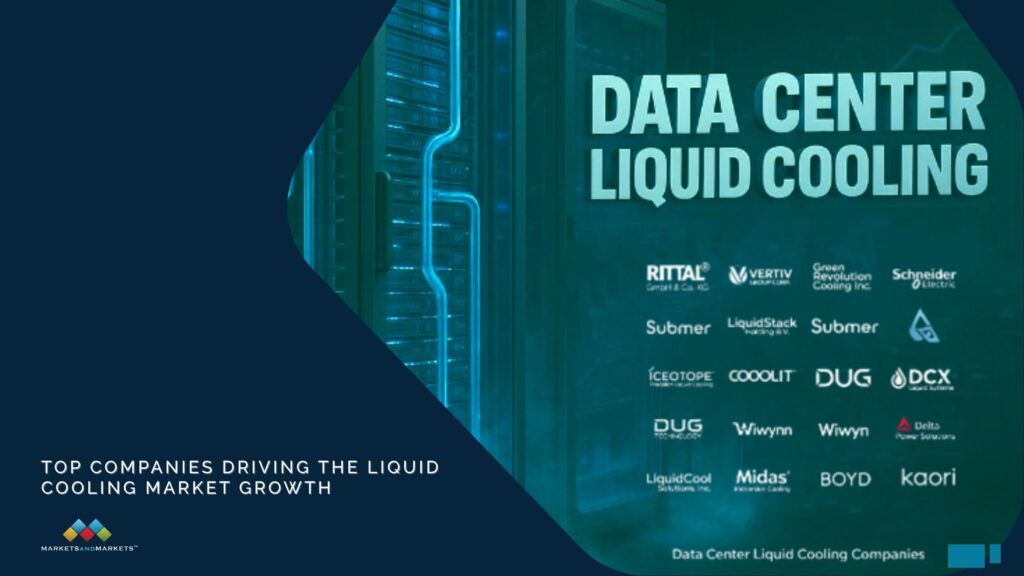
The exponential growth of power-hungry applications—including AI, high-performance computing (HPC), and 5G—has made liquid cooling a necessity rather than a niche solution. Traditional air-cooling systems simply cannot dissipate heat fast enough to support modern server densities. Liquid cooling dramatically lowers data center cooling energy from around 40% to less than 10%, offering ultra-compact, whisper-quiet operations that meet performance demands and sustainability goals
Data center liquid cooling companies are ranked based on revenue, production capacity, technological innovation, and market presence.The data center liquid cooling market is projected to grow from USD 2.84 billion in 2025 to USD 21.14 billion by 2032, at a CAGR of 33.2% during the forecast period.
Industry Leaders Driving Innovation
Nvidia, in collaboration with hardware partners like Supermicro and Foxconn, is spearheading the liquid cooling revolution. Their new GB200 AI racks, cooled via tubing or immersion, demonstrate that cutting-edge chips require liquid solutions — reducing overhead cooling and doubling compute density . Supermicro, shipping over 100,000 GPUs in liquid-cooled racks, has become a dominant force in AI server deployments HPE and Dell EMC also lead with hybrid and direct-to-chip models, gaining momentum with investor confidence and production scale
Specialized Cooling Specialists
Beyond hyperscalers, several specialized firms are redefining thermal efficiency at scale. Vertiv, with $352 million in R&D investment and a record of collaboration with Nvidia and Intel, offers chassis-to-data-center solutions—including immersion and direct-chip systems—that reduce carbon emissions and enhance density Schneider Electric, through its EcoStruxure platform, continues to lead in sustainable liquid rack modules and modular data centers, merging energy management with cutting-edge cooling in hyperscale environments
Pioneers in Immersion and Two‑Phase Cooling
Companies like LiquidStack, Green Revolution Cooling (GRC), and Iceotope are pushing the envelope on immersion cooling. LiquidStack’s award-winning two-phase systems and GRC’s CarnotJet single-phase racks offer up to 90% energy savings and water reductions, with Cortex-level PUEs under 1.03 Iceotope’s chassis-scale immersion devices reduce cooling power by 40% while cutting water use by up to 96%—ideal for edge-to-hyperscale deployments Asperitas and Submer focus on modular immersion pods, scaling efficiently in dense compute settings
Toward a Cooler, Greener Future
With the liquid cooling market expected to exceed USD 4.8 billion by 2027, and power-dense servers now demanding more efficient thermal solutions, liquid cooling is fast becoming the industry standard Companies from Nvidia to Iceotope are reshaping how we approach thermal design—prioritizing integration, scalability, sustainability, and smart control. As computing power and environmental expectations rise, partnering with these liquid-cooling leaders is essential for organizations aiming to stay ahead.
Data Center Liquid Cooling Companies
Vertiv Group Corp. (US), Green Revolution Cooling Inc. (US), COOLIT SYSTEMS (Canada), Schneider Electric (France), and DCX Liquid Cooling Systems (Poland) fall under the winners’ category. These are leading players globally in the data center liquid cooling market. These players have adopted the strategies of acquisitions, expansions, agreements, and product launches to increase their market shares.
As the demand for faster, denser, and more energy-efficient computing infrastructure accelerates, liquid cooling is no longer a futuristic option—it’s a critical necessity. The companies leading this revolution, from global tech giants like Nvidia and HPE to specialized innovators like LiquidStack and Iceotope, are setting new benchmarks in thermal efficiency, sustainability, and system design. Their technologies not only enhance performance but also significantly reduce environmental impact, positioning them as key enablers of the digital and green transformation. For data center operators, IT strategists, and industry experts, aligning with these pioneers offers a competitive edge in a world where every degree and every watt counts.